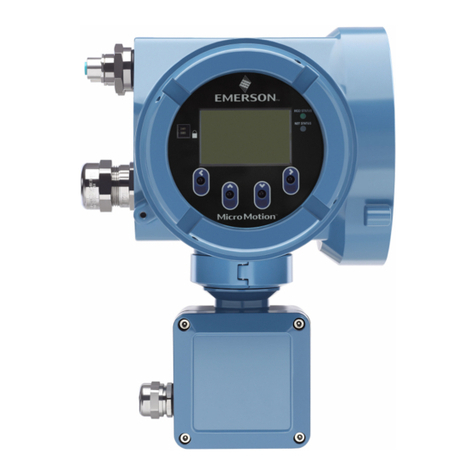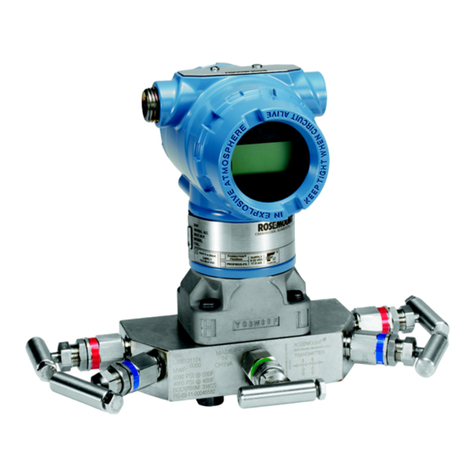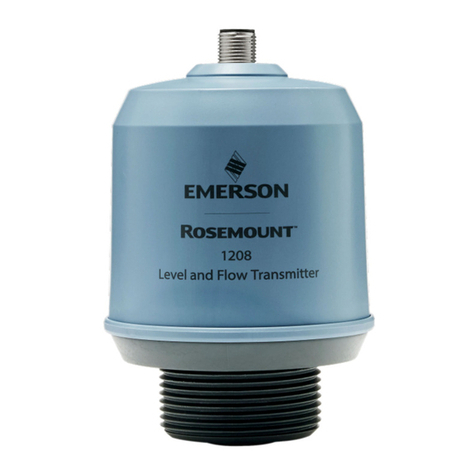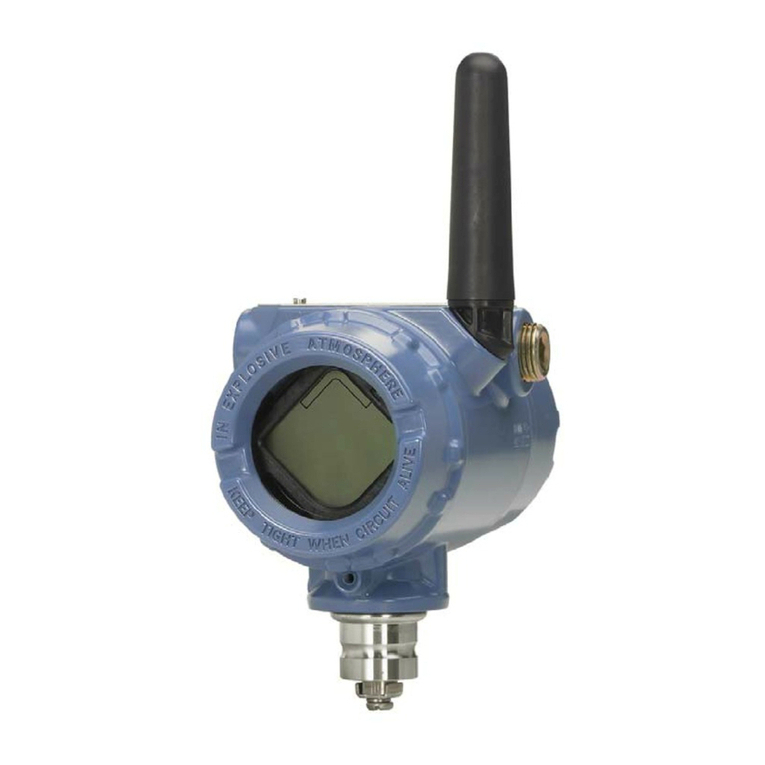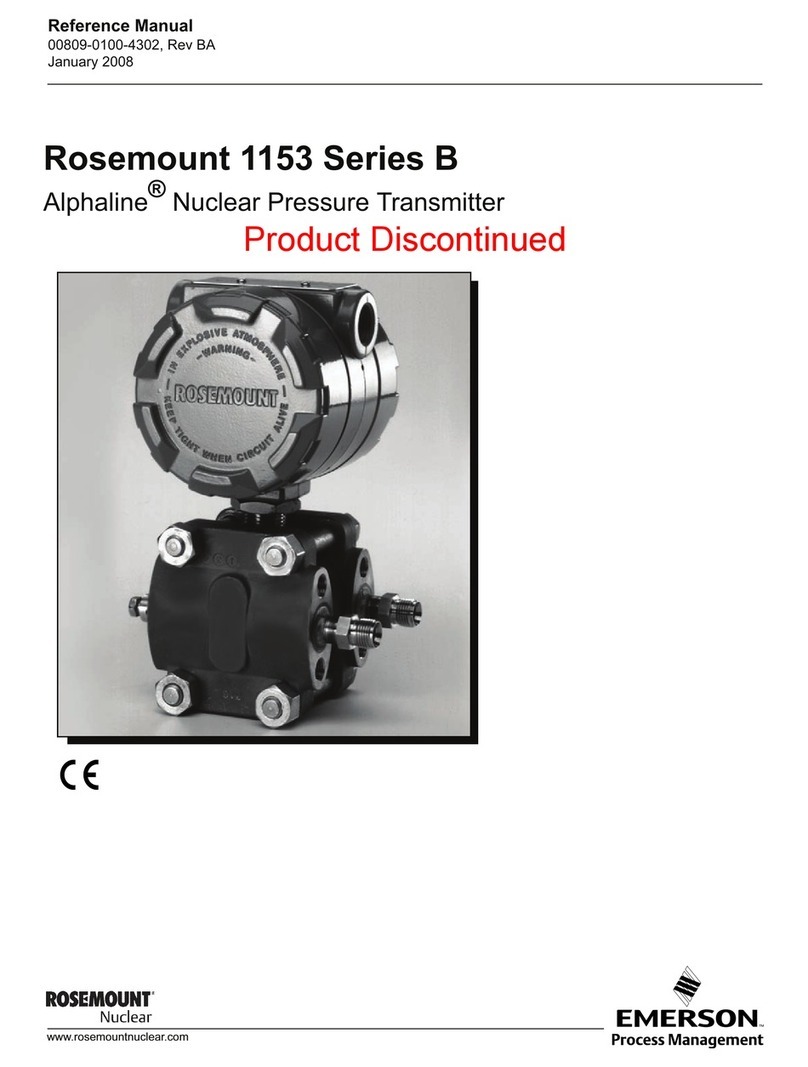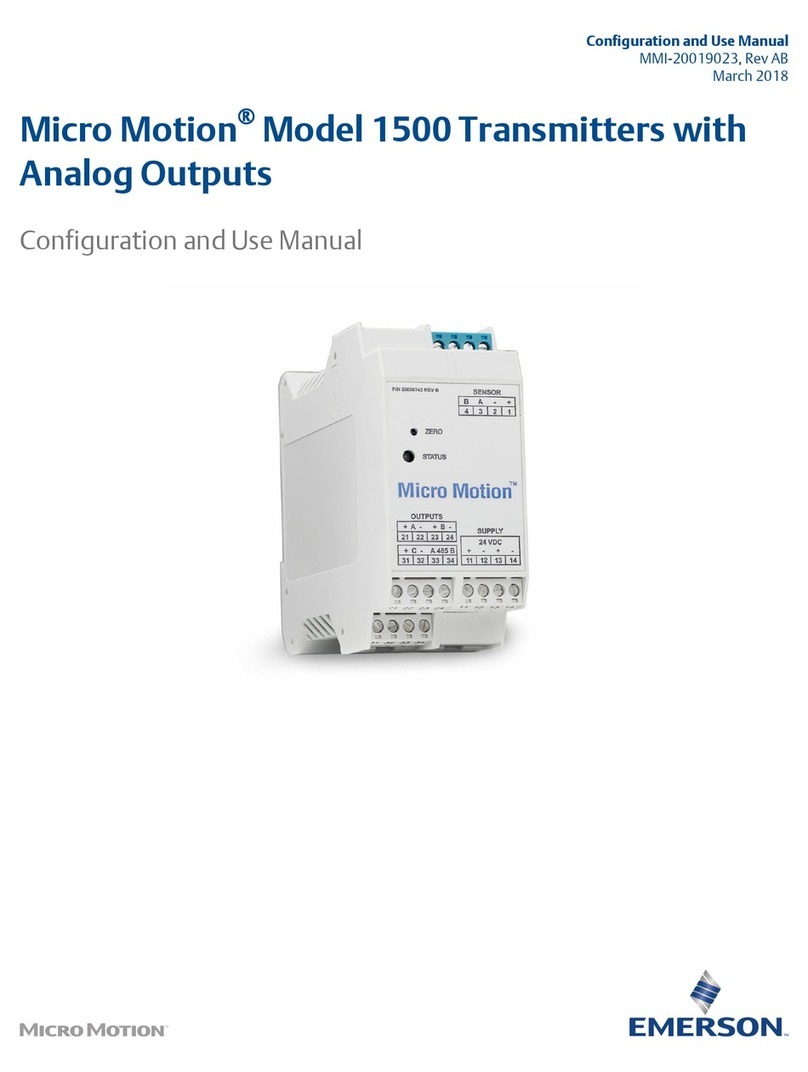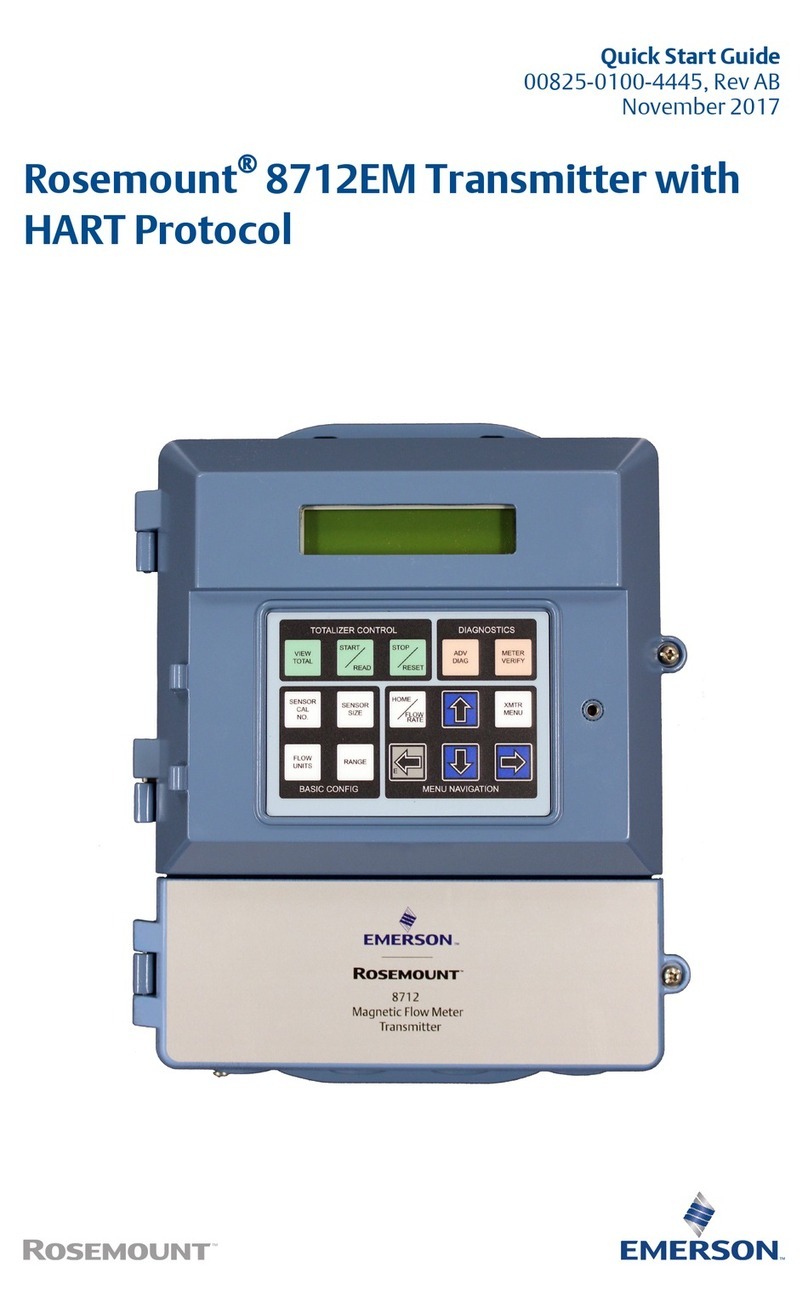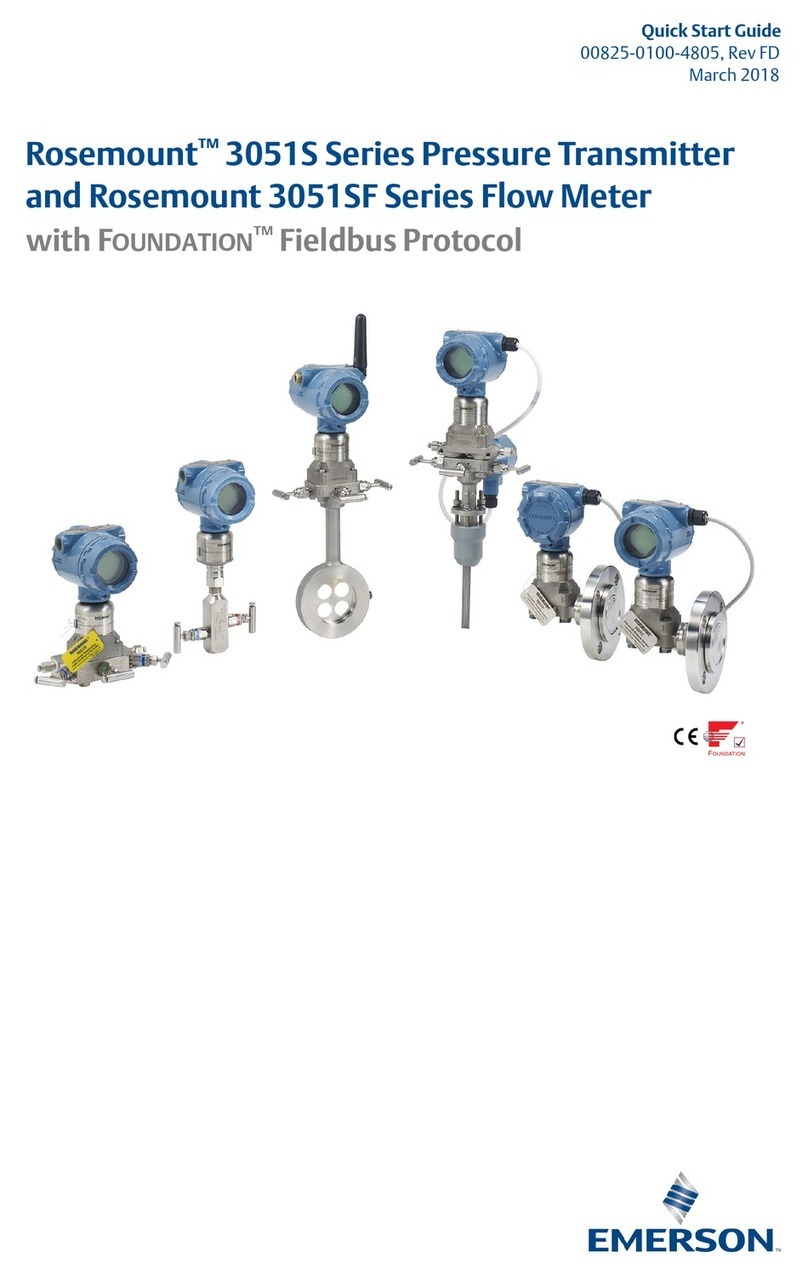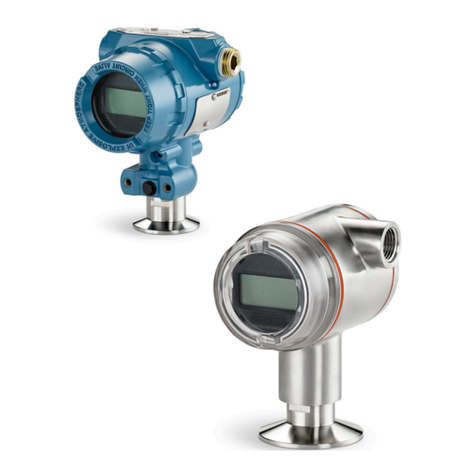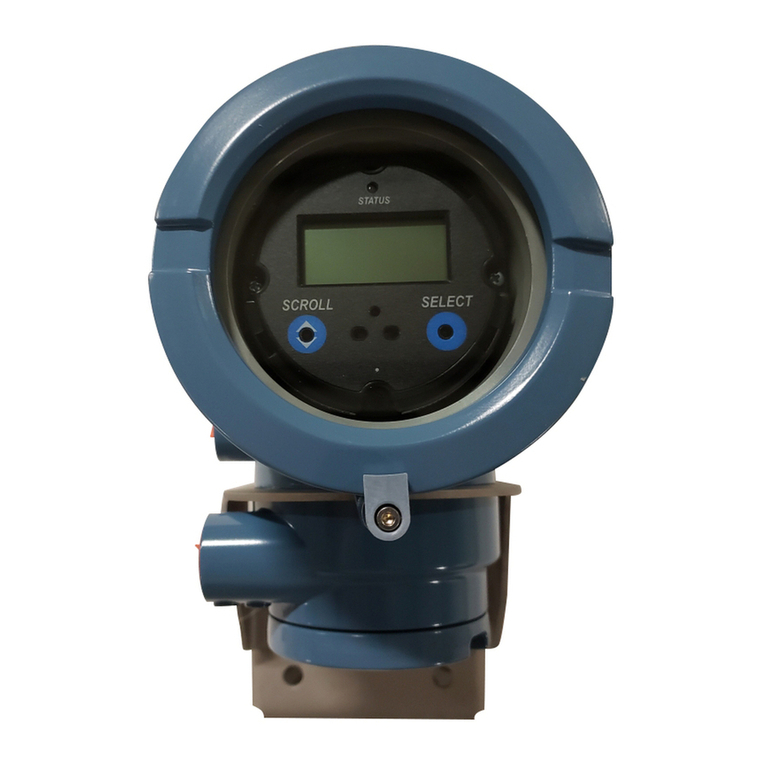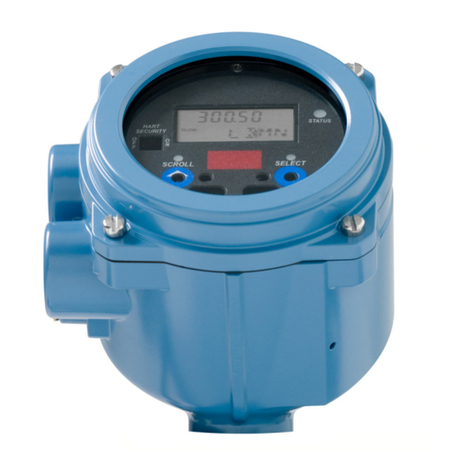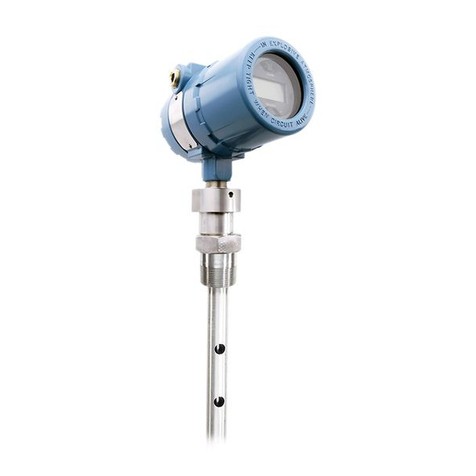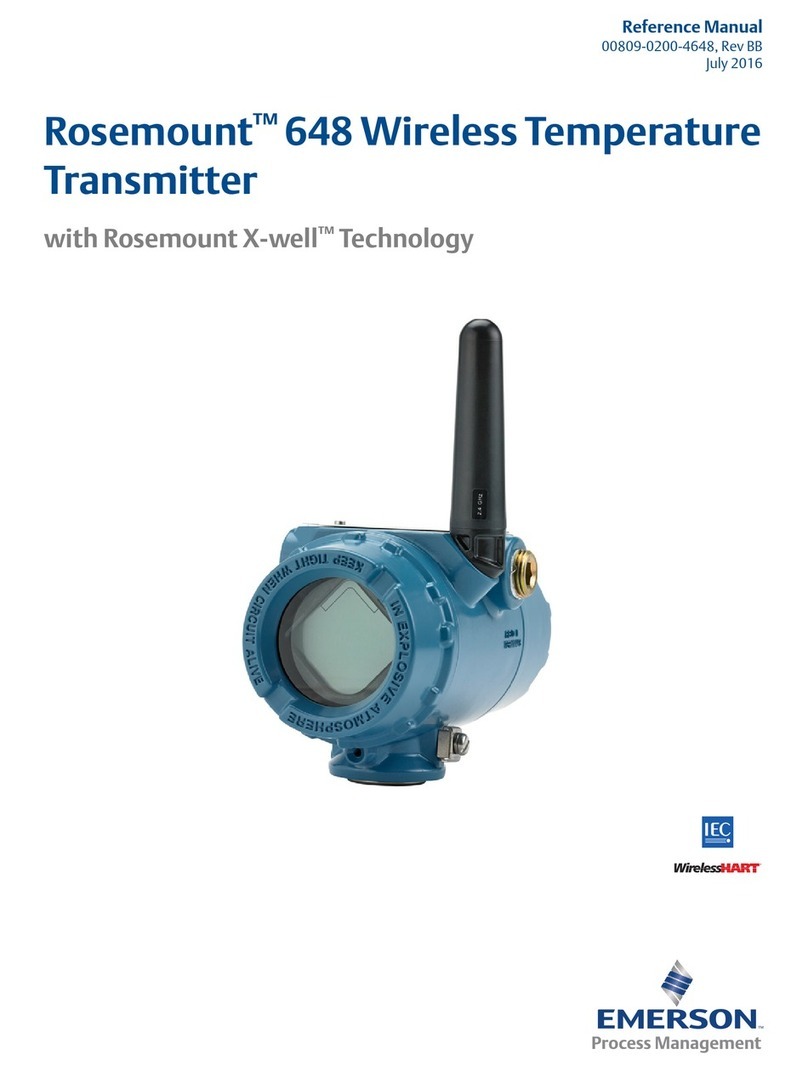
September 2017
2
Quick Start Guide
NOTICE
This guide provides basic guidelines for Rosemount 3051S High Static Differential Pressure Transmitter
(3051SHP). It does not provide instructions for configuration, diagnostics, maintenance, service,
troubleshooting, Explosion-proof, Flameproof, or intrinsically safe (I.S.) installations. Refer to the Rosemount
3051SHP Reference Manual for more instruction. This manual is also available electronically on
Emerson.com/Rosemount.
Shipping considerations for wireless products
The unit was shipped to you without the power module installed. Remove the power module prior to
shipping the unit.
Each power module contains two “C” size primary lithium batteries. Primary lithium batteries are regulated
in transportation by the U.S. Department of Transportation, and are also covered by IATA (International Air
Transport Association), ICAO (International Civil Aviation Organization), and ARD (European Ground
Transportation of Dangerous Goods). It is the responsibility of the shipper to ensure compliance with these
or any other local requirements. Consult current regulations and requirements before shipping.
Explosions could result in death or serious injury.
Installation of this transmitter in an explosive environment must be in accordance with the appropriate local,
national, and international standards, codes, and practices. Review the approvals section of the Rosemount
3051SHP Reference Manual for any restrictions associated with a safe installation.
Before connecting a HART®-based communicator in an explosive atmosphere, make sure the instruments
in the loop are installed in accordance with intrinsically safe or non-incendive field wiring practices.
In an Explosion-proof/Flameproof installation, do not remove the transmitter covers when power is applied
to the unit.
Process leaks may cause harm or result in death.
To avoid process leaks, ensure secure connection with coned-and-threaded connection.
Electrical shock can result in death or serious injury.
Avoid contact with the leads and the terminals. High voltage that may be present on leads can cause
electrical shock.
Conduit/cable entries
Unless marked, the conduit/cable entries in the transmitter housing use a1/2–14 NPT thread form. Entries
marked “M20” are M20 ⫻1.5 thread form. On devices with multiple conduit entries, all entries will have the
same thread form. Only use plugs, adapters, glands, or conduit with a compatible thread form when closing
these entries.
When installing in a hazardous location, use only appropriately listed or Ex certified flameproof/dust plugs,
adapters, or glands in cable/conduit entries.
Wireless/power module considerations
The power module may be replaced in a hazardous area. The power module has surface resistivity greater
than one gigaohm and must be properly installed in the wireless device enclosure. Care must be taken
during transportation to and from the point of installation to prevent electrostatic charge build-up.
This device complies with Part 15 of the FCC Rules. Operation is subject to the following conditions. This
device may not cause harmful interference. This device must accept any interference received, including
interference that may cause undesired operation. This device must be installed to ensure a minimum
antenna separation distance of 20 cm from all persons.
Contents
System readiness . . . . . . . . . . . . . . . . . . . . . . . . . 3
Mount the transmitter . . . . . . . . . . . . . . . . . . . . 4
Consider housing rotation . . . . . . . . . . . . . . . . . 8
Set switches and jumpers . . . . . . . . . . . . . . . . . . 9
Power up transmitter . . . . . . . . . . . . . . . . . . . . 10
Verify configuration . . . . . . . . . . . . . . . . . . . . . 19
Trim the transmitter . . . . . . . . . . . . . . . . . . . . . 22
Safety instrumented systems installation . . . 22
Product Certifications . . . . . . . . . . . . . . . . . . . . 23

